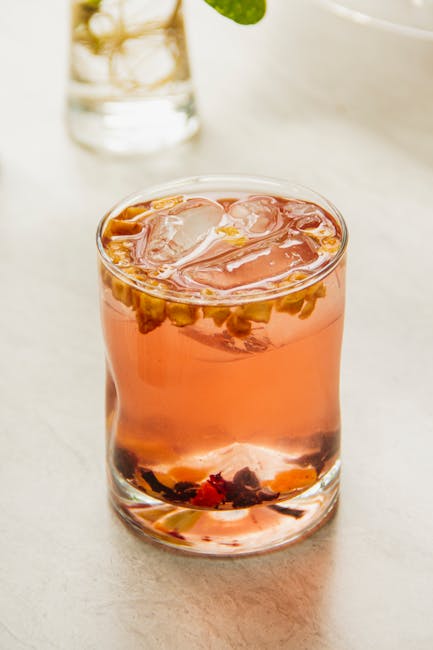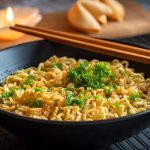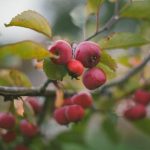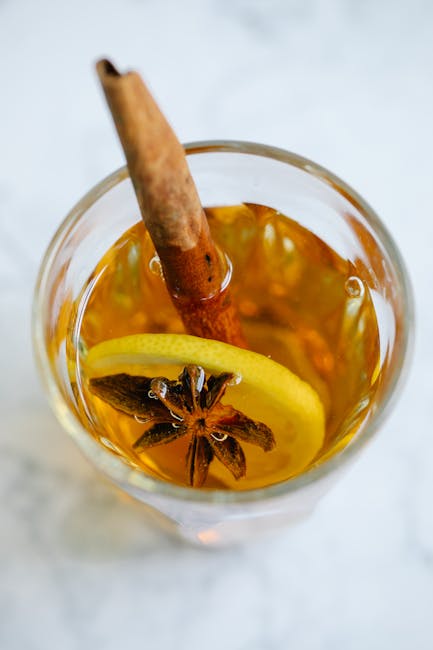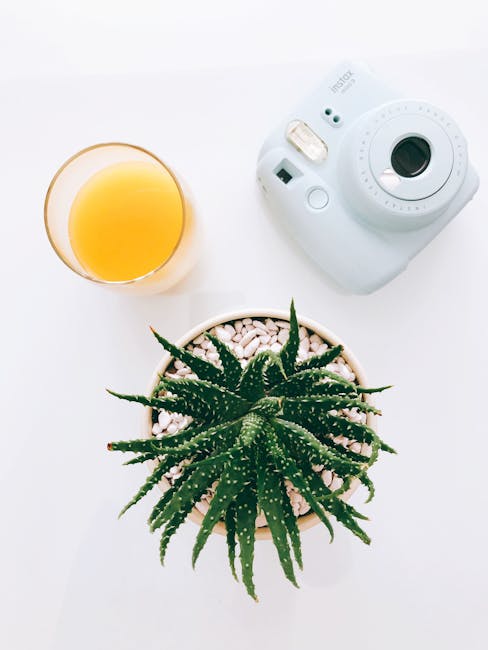Prepare to embark on a flavorful journey with the best Hibiscus tea recipe! This vibrant, tart beverage boasts a rich history and cultural significance spanning continents and centuries. Hibiscus, scientifically known as Hibiscus sabdariffa, isn’t just a pretty flower; it’s a powerhouse of antioxidants and a staple in many cultures worldwide. Its origins are believed to be in West Africa, with evidence suggesting cultivation dating back thousands of years. From there, it spread across the globe, finding its way into the culinary traditions of diverse societies.
The use of hibiscus for both culinary and medicinal purposes is deeply ingrained in various cultures. In many parts of Africa, hibiscus tea, often called karkadé, is a beloved everyday drink, consumed both hot and cold. It’s estimated that over 150,000 metric tons of hibiscus are produced annually, a testament to its widespread popularity. In Mexico, it’s frequently used in aguas frescas, refreshing fruit-infused waters, adding a tangy twist. Across Asia, hibiscus appears in everything from jams and jellies to savory dishes, showcasing its versatility. Its incorporation into these diverse cuisines highlights its adaptability and the enduring appeal of its unique flavor profile.
Beyond its culinary applications, hibiscus holds a significant place in traditional medicine. For centuries, it has been valued for its potential health benefits, including its ability to lower blood pressure and help manage weight. While more research is needed to fully understand its effects, numerous studies suggest promising results. This long-standing association with health and wellbeing adds another layer to its cultural importance, solidifying its position as more than just a beverage but a valuable part of the cultural heritage of numerous regions. Interestingly, the color of hibiscus tea can vary greatly depending on the variety and preparation method, ranging from a deep crimson to a more delicate pinkish hue. This visual diversity only adds to its allure.
This recipe aims to capture the essence of this remarkable flower, providing you with a simple yet effective method to brew a truly exceptional cup of hibiscus tea. We’ll guide you through the process, ensuring you achieve the perfect balance of tartness and sweetness, allowing you to savor the rich history and vibrant flavor of this extraordinary beverage. Get ready to experience the magic of hibiscus!
Ingredients and Measurements
Crafting the perfect cup of hibiscus tea hinges on using high-quality ingredients and precise measurements. While seemingly simple, the nuances of quantity and ingredient selection significantly impact the final flavor profile. This section details the ingredients and their precise measurements for our Best Hibiscus Tea Recipe, ensuring you achieve a consistently delicious brew.
Dried Hibiscus Flowers: The star of the show! We recommend using 2 tablespoons (approximately 5 grams) of high-quality dried hibiscus flowers for every 8 ounces (240ml) of water. Using less will result in a weaker, less flavorful tea, while using more can lead to an overly tart and potentially bitter brew. Look for vibrant, deep red hibiscus flowers that are free of stems and other debris. The quality of your hibiscus directly impacts the final taste and color of your tea.
Water: The choice of water is surprisingly crucial. Avoid using hard water, as the minerals can interfere with the extraction of the hibiscus’s delicate flavors and create a slightly metallic taste. Filtered water or spring water are ideal choices. For this recipe, we’ll be using 8 ounces (240ml) of freshly drawn water per serving. You can easily scale this up or down depending on the number of servings you need. Remember to always use freshly drawn water, as stagnant water can contain impurities that may affect the taste.
Optional Sweeteners and Flavor Enhancers: While many appreciate the naturally tart flavor of hibiscus tea, some prefer to add a touch of sweetness or other complementary flavors. If you choose to sweeten, we recommend using a natural sweetener like honey or agave nectar. Start with 1 teaspoon (4 grams) and adjust to your taste. Avoid using refined sugar as it can clash with the complex flavors of the hibiscus.
Other flavor enhancers can also elevate your hibiscus tea experience. A small squeeze of fresh lime or lemon juice (about ½ a lime or lemon) adds a bright citrus note that complements the tartness of the hibiscus. A few thinly sliced pieces of fresh ginger (about 1 inch) can add a subtle warmth and spice. Experiment with different combinations to discover your preferred flavor profile. Remember to add any flavor enhancers *after* steeping the hibiscus to avoid overpowering the delicate floral notes.
Measuring Tools: Accurate measurement is key to consistent results. For this recipe, a kitchen scale is highly recommended for weighing the hibiscus flowers. While volume measurements (tablespoons) are provided, weight offers a more precise measurement, especially for ingredients that can vary in density. Use a standard measuring cup for the water and a teaspoon for any sweeteners. Investing in accurate measuring tools ensures you consistently achieve the intended flavor profile.
By following these precise ingredient measurements and recommendations, you will be well on your way to brewing the best hibiscus tea you’ve ever tasted. Remember that taste is subjective, so feel free to experiment and adjust the recipe to your personal preferences. Happy brewing!
Equipment List
Making the perfect cup of hibiscus tea requires the right tools. While you might be able to improvise with some items, having the proper equipment will significantly enhance your brewing experience and ensure consistent results. This list details the essential and recommended equipment, along with explanations of why each is important.
Essential Equipment:
1. Kettle (1.5-2.0 Liter Capacity): A kettle is crucial for heating the water to the optimal temperature for hibiscus tea brewing. A 1.5-2.0 liter capacity is ideal, allowing you to brew enough tea for multiple servings or to make a larger batch for later use. Electric kettles are recommended for their speed and ease of use. They often feature temperature control settings, which is particularly beneficial for hibiscus tea as overly hot water can result in a bitter taste. If using a stovetop kettle, be sure to monitor the water carefully to prevent boiling over.
2. Teapot or Infuser (1-1.5 Liter Capacity): The choice between a teapot and an infuser depends on your personal preference. A teapot with an integrated infuser is convenient for steeping the hibiscus flowers directly. Ensure its capacity is sufficient for your desired tea quantity. Alternatively, a separate infuser, either a mesh ball or a fine-mesh strainer, is useful for controlling the brewing time and preventing stray hibiscus pieces from ending up in your cup. A teapot made of glass or porcelain is best as it allows you to visually monitor the steeping process and maintains the tea’s temperature effectively.
3. Measuring Cups and Spoons: Precise measurements are essential for achieving the desired flavor intensity. Use standard measuring cups and spoons (e.g., 1 cup, 1 tablespoon, 1 teaspoon) to ensure consistency in your hibiscus tea preparation. Inaccurate measurements can lead to either weak or overly strong brews.
4. Scale (Optional but Recommended): While not strictly essential, a kitchen scale is highly recommended for accurate measurement of the dried hibiscus flowers, especially if you’re aiming for consistent results. A digital scale with a gram measurement function is ideal for precise weighing of the hibiscus blossoms.
Recommended Equipment:
1. Timer: A timer is crucial for controlling the steeping time. Over-steeping can lead to a bitter taste, while under-steeping can result in a weak brew. A digital timer is recommended for its accuracy and ease of use.
2. Fine-Mesh Sieve or Strainer (for loose leaf hibiscus): If using loose leaf hibiscus flowers, a fine-mesh sieve or strainer is essential to remove the flowers from the brewed tea before serving. A stainless steel sieve is durable and easy to clean.
3. Mug or Teacups: Choosing attractive mugs or teacups enhances the overall tea-drinking experience. Consider using heat-resistant mugs, especially if serving the tea directly from the teapot.
4. Serving Pitcher (for large batches): If you’re making a large batch of hibiscus tea, a serving pitcher is convenient for storage and serving. A glass or stainless steel pitcher is recommended for its durability and ease of cleaning.
By using this equipment list as a guide, you’ll be well-equipped to brew the perfect cup of hibiscus tea every time.
Instructions
This recipe yields approximately 4 cups of delicious hibiscus tea. Adjust quantities as needed to suit your needs.
Step 1: Preparing the Hibiscus Flowers Begin by carefully measuring out 1 cup of dried hibiscus flowers. Ensure they are free from any stems or debris. You can achieve this by gently sifting them through a fine-mesh sieve. Using high-quality, dried hibiscus flowers is crucial for optimal flavour and colour. Look for vibrant red flowers with a strong aroma.
Step 2: Boiling the Water Bring 4 cups (950ml) of fresh, filtered water to a rolling boil in a medium-sized saucepan. Using filtered water will eliminate any potential chlorine taste that might interfere with the delicate flavour of the hibiscus. Avoid using tap water unless it’s known to be free from strong mineral content.
Step 3: Steeping the Hibiscus Once the water boils, carefully pour it over the measured hibiscus flowers in a heat-resistant teapot or pitcher. A glass teapot is ideal as it allows you to observe the beautiful colour of the tea as it steeps. Do not use a metal container, as this can affect the flavour and colour of the tea.
Step 4: Steeping Time Cover the teapot or pitcher with a lid and allow the hibiscus to steep for 10-15 minutes. The steeping time will determine the strength and intensity of the flavour. For a milder tea, steep for 10 minutes. For a more robust flavour, steep for closer to 15 minutes. Experiment to find your preferred strength. Gently swirl the teapot occasionally to ensure even extraction of flavour and colour.
Step 5: Strain and Serve After the steeping period, carefully strain the hibiscus tea through a fine-mesh sieve or cheesecloth into your serving cups or a larger pitcher. This removes the spent hibiscus flowers, leaving behind a clear, vibrant tea. Discard the used hibiscus flowers.
Step 6: Sweetening (Optional) Hibiscus tea naturally has a tart and slightly tangy flavour. Many people enjoy it unsweetened, but if you prefer a sweeter beverage, add honey, agave nectar, or maple syrup to taste. Add sweetener after straining to avoid clumping and ensure even distribution. Start with a small amount and adjust according to your preference.
Step 7: Serving Suggestions Serve your hibiscus tea warm or chilled. It’s delicious served hot on a cool evening or over ice on a warm day. Garnish with a fresh sprig of mint or a slice of orange for an extra touch of elegance. You can also experiment with adding other herbs and spices, such as ginger or cinnamon, to create unique flavour combinations.
Important Note: Always supervise children when handling hot water and boiling liquids. If you have any allergies or health concerns, consult with your doctor before consuming hibiscus tea, especially if you are pregnant or breastfeeding.
Steeping Techniques
Steeping hibiscus tea correctly is key to unlocking its vibrant flavor and beautiful color. While seemingly simple, a few key techniques can elevate your hibiscus tea experience from good to extraordinary. The method you choose will depend on your preferred strength and the type of hibiscus you’re using. Generally, you’ll want to avoid over-steeping, as this can lead to a bitter, astringent taste.
Method 1: The Classic Steep (for loose leaf hibiscus)
This method is ideal for achieving a balanced, flavorful cup. For a single serving (8 ounces/237ml), use 1-2 tablespoons (approximately 3-6 grams) of dried hibiscus flowers. Place the hibiscus in a heat-resistant infuser or teapot. Bring filtered water to a boil (212°F/100°C). Avoid using hard water, as it can affect the taste and color. Pour the boiling water over the hibiscus and steep for 5-7 minutes. Adjust steeping time based on your preference; a shorter steep will result in a lighter, brighter flavor, while a longer steep will produce a bolder, more intense taste. Remember that over-steeping can lead to bitterness.
Method 2: The Cold Brew Method (for a smoother, less tart flavor)
For a unique twist, try cold brewing your hibiscus tea. This technique yields a smoother, less tart beverage, perfect for those who find traditionally steeped hibiscus a bit too acidic. Use the same ratio of hibiscus to water as in the classic method (1-2 tablespoons per 8 ounces/237ml). Instead of using boiling water, add cold, filtered water to the hibiscus in a container. Steep in the refrigerator for at least 4 hours, or preferably overnight (8-12 hours) for optimal flavor extraction. Strain before serving. Cold brew hibiscus is wonderfully refreshing on a hot day.
Method 3: Second Steep (for maximizing flavor and reducing waste)
Hibiscus flowers can often yield a second, slightly lighter infusion. After your initial steep, don’t discard the flowers immediately. Add fresh, boiling water to the same hibiscus flowers and steep for another 2-3 minutes. This second steep will provide a more subtle flavor profile, ideal for a second cup or to add to other beverages. Note that the color will be less intense in the second steep. This practice is environmentally friendly and helps you get the most out of your hibiscus.
Professional Recommendations:
Use high-quality hibiscus flowers: The quality of the hibiscus directly impacts the taste of your tea. Look for vibrant, deep-red flowers with a pleasant aroma. Avoid any that look dull or have an unpleasant odor.
Experiment with steeping time: Personal preference plays a significant role in the ideal steeping time. Don’t be afraid to experiment to find your perfect balance between tartness and sweetness.
Strain properly: Always strain your hibiscus tea thoroughly to remove the flower pieces. This prevents any unpleasant texture in your final beverage. A fine-mesh strainer is recommended.
Serve hot or iced: Hibiscus tea is equally enjoyable served hot or iced. For iced hibiscus, steep your tea as usual, then allow it to cool completely before serving over ice.
Sweetening and Flavoring Options
While hibiscus tea boasts a naturally tart and refreshing flavor, many enjoy enhancing it with sweeteners and complementary flavors. The best choice depends entirely on personal preference, but we’ll explore several popular options to inspire your creativity.
Simple Sweeteners: The most straightforward approach involves adding a sweetener like granulated sugar, honey, or maple syrup. For a cup of hibiscus tea (approximately 8 ounces), start with 1-2 teaspoons of your chosen sweetener and adjust to your liking. Remember to add the sweetener after steeping the tea, as adding it beforehand can hinder the extraction of the hibiscus’s vibrant color and flavor.
Granulated Sugar: This readily available option offers a clean sweetness that doesn’t significantly alter the tea’s flavor profile. It dissolves easily in both hot and cold hibiscus tea. Use 1-2 teaspoons per 8 ounces of tea, adjusting to taste.
Honey: Honey imparts a more complex sweetness with subtle floral notes that can beautifully complement hibiscus. Its viscosity might require slightly more stirring to dissolve completely. Start with 1-1.5 tablespoons per 8 ounces of tea, adjusting according to your preference for sweetness and the type of honey used (lighter honeys tend to be less assertive in flavor). Consider the type of honey; a darker, stronger honey will be more noticeable in the final brew.
Maple Syrup: Maple syrup offers a rich, caramel-like sweetness with a distinctive depth of flavor. It adds a unique dimension to hibiscus tea, especially for those seeking a more robust taste. Use 1-1.5 tablespoons per 8 ounces of tea, adjusting as needed. Note that maple syrup’s intense flavor can be overpowering if used excessively.
Beyond Basic Sweeteners: Explore agave nectar, coconut sugar, or stevia for alternative sweetness options. These offer varying levels of sweetness and unique flavor profiles. Always start with small quantities and adjust to your liking, as their sweetness intensity can differ from traditional sugars.
Flavor Enhancements: Beyond sweetness, you can elevate your hibiscus tea with complementary flavors. A squeeze of fresh lime or lemon juice brightens the tartness and adds a refreshing citrus note. A pinch of cinnamon or ginger adds warmth and spice. Consider adding a few mint leaves during the steeping process for a subtly refreshing mint hibiscus tea. Experiment with different combinations to discover your favorite flavor profiles.
Professional Recommendation: For a truly balanced and refined hibiscus tea experience, we recommend starting with a small amount of sweetener and carefully adjusting to your taste. Don’t be afraid to experiment with different flavor combinations to discover your perfect cup. Always taste as you go, and remember that less is often more. The natural tartness of hibiscus is a significant part of its appeal, and you want to maintain its characteristic flavor while enhancing it with your chosen additions.
Serving Suggestions
Once you’ve brewed the perfect cup of hibiscus tea using our Best Hibiscus Tea Recipe, the fun really begins! There are countless ways to enjoy this vibrant and tangy beverage, from simple elegance to creative cocktails. Here are a few serving suggestions to inspire your next hibiscus tea experience.
Classic and Simple: For a purist approach, serve your hibiscus tea hot or iced, straight from the pot or pitcher. A good starting point is 8 ounces (240ml) of brewed tea per serving. If serving hot, enjoy it immediately for the best flavor and aroma. If serving iced, allow the tea to cool completely before chilling in the refrigerator for at least 30 minutes. A few ice cubes and a thin slice of lime or orange can elevate this simple pleasure.
Sweet and Refreshing: Hibiscus tea’s tartness pairs beautifully with sweetness. Consider adding a touch of honey, agave nectar, or maple syrup to your taste. Start with 1-2 teaspoons of sweetener per 8 ounces of tea and adjust to your preference. A splash of sparkling water or club soda can transform a simple hot cup into a refreshing sparkling hibiscus spritzer. For a more substantial sweet treat, try adding a spoonful of fruit preserves, like raspberry or strawberry, to your warm tea.
Fruity and Festive: Enhance the natural fruity notes of hibiscus tea by adding fresh or frozen fruit. Berries, such as raspberries, strawberries, and blueberries, are excellent choices. Simply muddle a few berries in the bottom of your glass before adding the tea. Alternatively, you can steep the fruit with the tea leaves for a more intense flavor. Slices of citrus fruits like oranges, lemons, or limes also add a beautiful visual appeal and a refreshing twist. For a truly decadent treat, consider adding a few slices of fresh pineapple or mango.
Spicy and Aromatic: For a more complex flavor profile, experiment with spices. A pinch of cinnamon, star anise, or cloves added during the brewing process can impart warmth and depth. Ginger is another excellent complement, adding a spicy kick that balances the tartness of the hibiscus. You can add fresh ginger slices to your brewing pot or use a teaspoon of ground ginger. A dash of cardamom can also create a sophisticated and exotic flavor combination.
Hibiscus Tea Cocktails: Hibiscus tea is a surprisingly versatile ingredient in cocktails. Its tartness makes it a perfect base for both refreshing and sophisticated drinks. Try using it as a base for a non-alcoholic spritzer, or add it to your favorite cocktail for an unexpected twist. Combine it with vodka or gin for a tart and refreshing cocktail. Remember to adjust the sweetness based on the alcohol content and other ingredients you choose. Garnishing with fresh herbs like mint or rosemary adds an elegant touch.
Important Note: Always taste your tea before serving and adjust the sweetness and additions to your personal preference. Remember that the strength of the brew can vary depending on the amount of tea leaves used and the brewing time. Experiment and find your perfect balance!
Recommendations for the Best Hibiscus Tea
This hibiscus tea recipe is designed for optimal flavor and health benefits. To ensure you get the most out of your brew, follow these recommendations carefully. Proper steeping technique and storage are key to achieving the vibrant color and tangy taste this tea is known for.
Serving Suggestions: This refreshing tea is incredibly versatile. Enjoy it hot or iced, depending on your preference and the season. For a hot cup, allow the steeped tea to cool slightly before drinking to avoid burning your mouth. For iced tea, steep a stronger batch and chill it thoroughly before serving. Consider adding a splash of citrus, such as lime or lemon, to enhance the tartness and add a touch of sweetness. A sprig of fresh mint or a few slices of ginger can also add interesting flavor profiles. Experiment with different additions to find your perfect combination!
Storage Conditions: Proper storage is crucial for maintaining the quality and flavor of your hibiscus tea. Once brewed, leftover tea should be refrigerated in an airtight container and consumed within 24 hours. For unbrewed hibiscus flowers, store them in an airtight container in a cool, dark, and dry place. Avoid exposure to moisture, light, and air, which can degrade the flavor and aroma of the hibiscus. Properly stored, dried hibiscus flowers can retain their quality for up to a year.
Complementary Dishes: Hibiscus tea’s tartness pairs beautifully with a variety of dishes. It complements rich and savory meals, cutting through the heaviness of fatty foods. Consider serving it alongside spicy dishes, such as curries or tacos, to balance the heat. It also pairs well with lighter fare, such as salads, grilled fish, or fruit tarts. The bright, tart flavor also makes it a perfect accompaniment to desserts and pastries with a hint of sweetness, like lemon bars or shortbread cookies.
Nutritional Information (per 8oz serving of brewed tea, approximate values): Calories: Approximately 0-5 (depending on added sweeteners). Carbohydrates: Negligible. Protein: Negligible. Fat: Negligible. Vitamins and Minerals: Hibiscus tea is a good source of antioxidants, including anthocyanins, which contribute to its vibrant color and potential health benefits. It also contains small amounts of vitamin C and minerals like iron and calcium. Note: Nutritional content can vary depending on the quality and source of the hibiscus flowers and any added ingredients.
Important Note: While generally safe, hibiscus tea may interact with certain medications. Consult your doctor if you have any concerns, particularly if you are taking blood pressure medication or blood thinners. Pregnant or breastfeeding women should also consult their doctor before consuming hibiscus tea regularly.

